Prices have been brought up to date, and are for stamps in 'average' condition. The currency is now selectable, the default is British Currency (£). I have revised Hiscocks' original listing, though leaving references to the original designations. The new designations have 'RH' numbers (Revised Hiscocks) to avoid confusion. Setup |
There is some dispute about when this Company started up in business. The 1934 and 1935 Stanley Gibbons Catalogue says :
"As the National Telephone Co. was not formed until 1889 the date of issue (1884) previously allotted to these stamps must be incorrect. The actual date is unknown"
Their 1899 catalogue gave 1884 as the issue date. Raymond Lister (1961) acknowledged the SG catalogue and dated the stamps at "1889 (?)". Subsequently Steve Hiscocks (1982)
Reverted to 1884, noting that their used stamps were sold in threepenny packets of complete sets at the international stamp exhibitions in Edinburgh in 1886 and 1890.
Langmead & Huggins (2003) say the NTP was incorporated in 1881 and the stamps were issued in 1884.
Steve Hiscocks wrote:
Telephone stamps were introduced in 1884 because of the need both to keep a strict account of revenues (because the Post Office took 10%!) and
because the slot machines available at that time did not allow use by both the general public who had to pay for the individual calls and subscribers to the
company who did not. Tally sheets were therefore used in the call office on which subscribers simply signed their names (plus date and call duration)
while non-subscribers attached stamps to the value of the call. Around 1888 the use of these stamps was extended to the payment of subscribers'
accounts. Subscribers bought stamps in advance (to the obvious benefit of the company), stuck them to the required amount on the invoices and
returned them to the company. Although in theory all used stamps remained with the company large numbers of (threepenny!) packets of
complete sets were sold at international stamp exhibitions in Edinburgh in 1886 and 1890. The stamps were discontinued in late 1891 when the
availability of improved slot-machines made it no longer necessary to fight the vigorous opposition of the Post Office who strongly objected to a subject of
the Queen (the chairman of the Company, Col. Robert Raynsford Jackson) also having his head on a stamp. The initial printings were 1d—122,000,
3d—125,000, 1s—61,000, and, later, 4d—23,000. Further printings were presumably made. They were printed in sheets of 12 by Maclure,
MacDonald & Co. of Glasgow. A temporary shortage of 6d stamps in Dundee in 1891 resulted in the use of bisected 1s stamps.
My notes:
Incorporated 10th March 1881 from a merger of The Telephone Company Ltd (using the Bell patent) with the Edison Telephone Company Ltd.
Additionally it merged with the *UTC and with the Lancashire and Cheshire Telephone Company in 1889 creating a much wider coverage.
According to Raymond Lister (1961) "in 1880 it was decided by a Court of law that a telephone was practically a telegraph." That put them in the domain of the Post Office monopoly.
The NTC therefore operated under license from the Post Office which charged 10% normally and 50% for use of their Trunk (inter-city) lines.
The Post Office took control of most of their operation at the beginning of 1912.
According to Langmead & Huggins, the cost of the subscription was £20 per annum, providing unlimited local calls,
However receipts of 1902 and 1909 both show £8-15/- paid in advance for a year.
* For much more detail, see ScienceMuseum.org
A postcard of 1911 shown below gives a table of rates showing some cheaper deals, such as £4 per annum covering 300 local calls on a four party line.
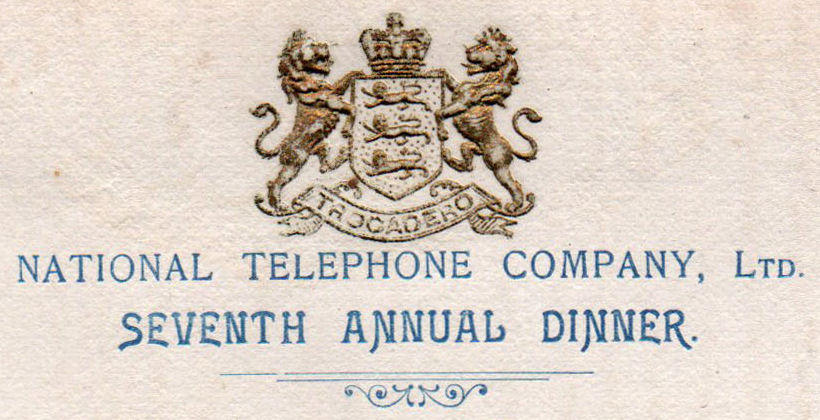
The National Telephone Co. Arms and motto. 'TROCADERO' liberally translated, is Latin for 'EXCHANGE'. It was also the name of the restaurant in which the event was held.
I have been puzzling over exactly where it was. The 'List of Toasts' contains some very prestigious people, including Lord Kelvin, G.C.V.O. tucked away near the bottom.
They all have one thing in common, they are all subscribers shown on the Exchange Diagram.
William E. L. Gaine (Chairman) is on A1.
Lord Kelvin, G.C.V.O. is on A2.
Sir Cuthbert Quilter, Bart, M.P. (a Director) is on A3
Lieut.-Col. C. B. Clay V. D. is on A192
Sir Albert Rollit, LL D., M.P. is on A201
Mr. J. C. Chambers is on A12
Prof. Silvanus P. Thompson F. R. S. is on A5
There should be plenty of clues there, where can they all get together?
I associate Lord Kelvin with Glasgow University, but the only Trocadero Restaurant at the time that I can find is in London.
The year 1900 though is a long time after the use of their stamps, and thus a long time after the cancels that are shown here.
By 1894, the NTC had an office in Oxford street and Cannon street in London E.C. By 1908 it was at Telephone House, Victoria Embankment, London, E.C.
| Shortcuts to different sections | Under Post Office | |||||
| Bisects | Cancels | Miscellaneous | Offices | Sheetlets | Stationery | P.O. Telephone Stationery |
These are of various shades on variously shaded paper. Issued in sheetlets of 12, Perf. 12
Printed by Maclure, Macdonald & Co., Glasgow. The 4d was produced later than the others, but apparently by 1886, for trunk calls.
The head on the design is that of the Chairman of the Company, Colonel Robert Raynsford Jackson.
According to Langmead & Huggins, "they were printed by the photographic gelatine process of collotyping".
L&H suggest that there were perhaps 9 sheetlets (3x3) on larger sheets that were then guillotined.
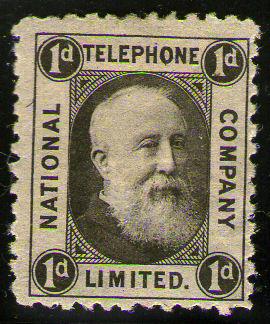 |
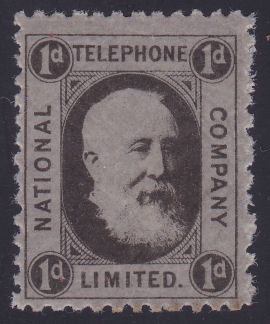 |
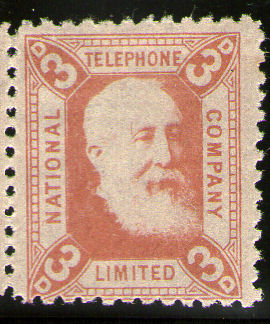 |
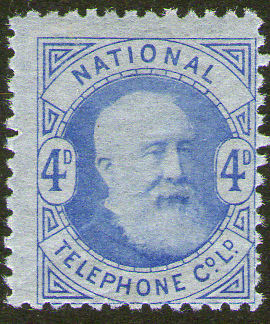 |
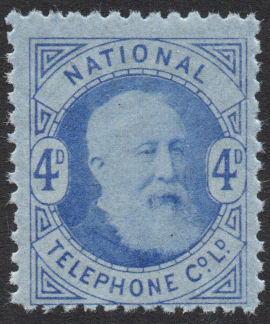 |
| 1d black - RH1. | 1d black on grey - RH1a. | 3d dull red - RH2 | 4d blue - RH3 | 4d blue - RH3a courtesy Steve Lawrie |
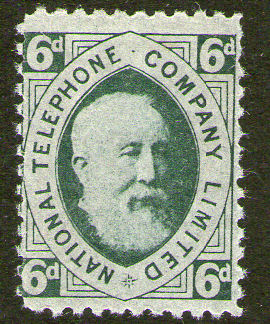 |
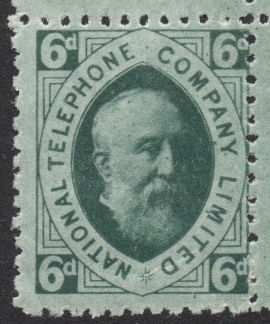 |
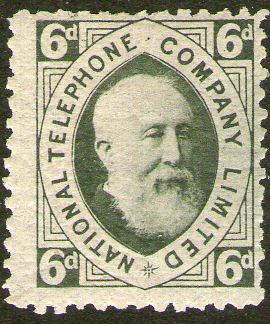 |
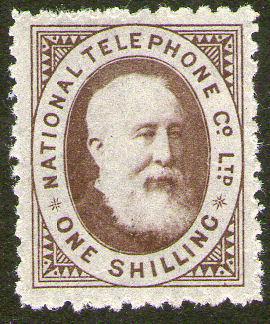 |
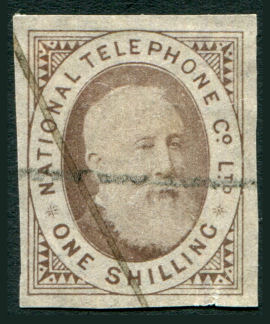 |
| 6d - Myrtle green - RH4 | 6d - Myrtle green - RH4a courtesy Steve Lawrie |
6d - Olive green - RH4b | 1s brown (shades) - RH5 | 1s brown - RH5b courtesy Steve Lawrie |
The imperforate 1s, RH5b, is not simply RH5 that didn't get perforated (or got trimmed), the lines are finer and the dots smaller.
In addition to that, none of the others are cancelled like that. I think this is how they were originally produced.
The 1s is known used bisected in Dundee. There are reports that these were a result of a shortage of the 6d values in 1891.
However dated examples are generally late 1890.
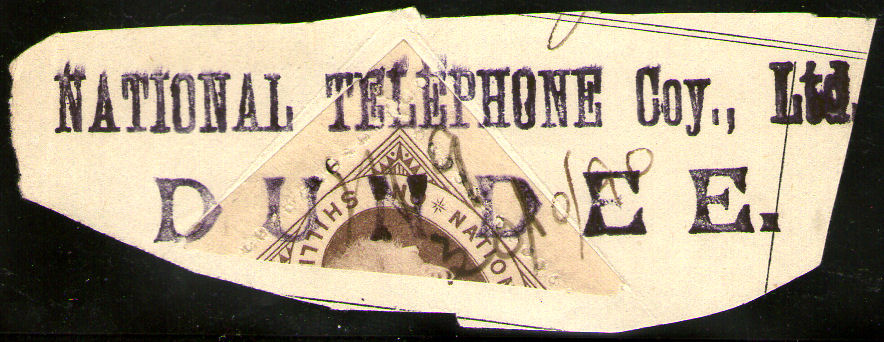
This one (of mine) is dated 30/10/90, but is not a good example as the bisected part is not 'tied'.
This one is clearly tied, and dated 16 December 1890.
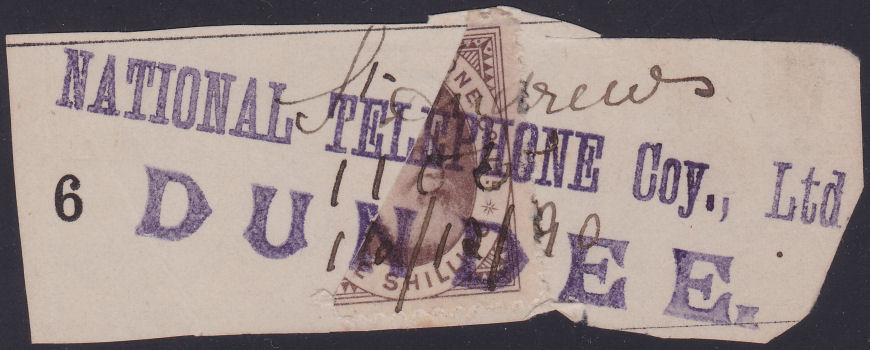
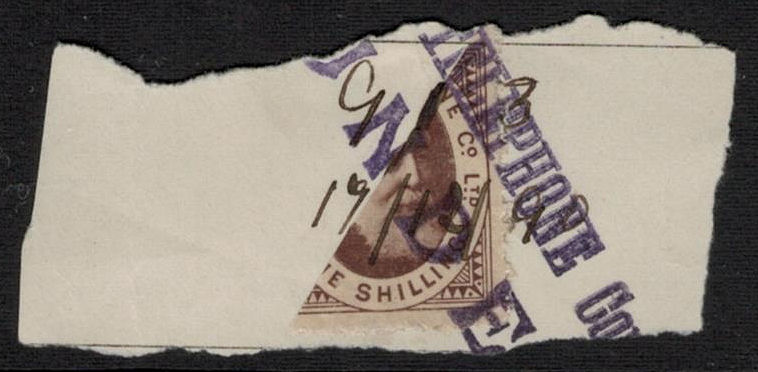
This one (courtesy of Roger de Lacy-Spencer) is dated 19/12/90.
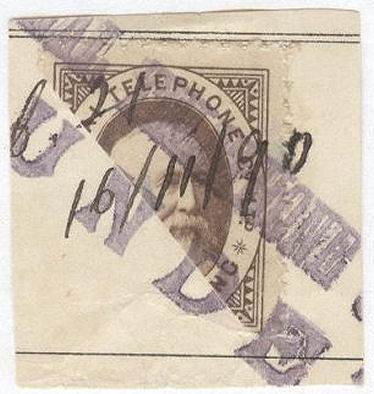
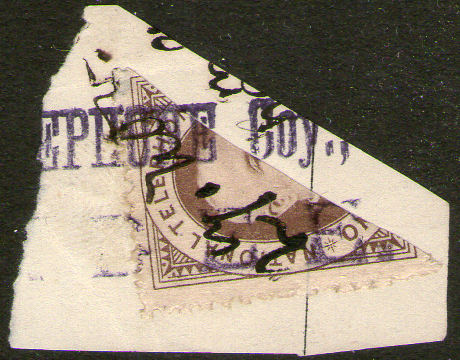
An example courtesy of Alejandro Toledano on the left, dated 16/11/90. One of mine on the right, 27th Nov. but no year.
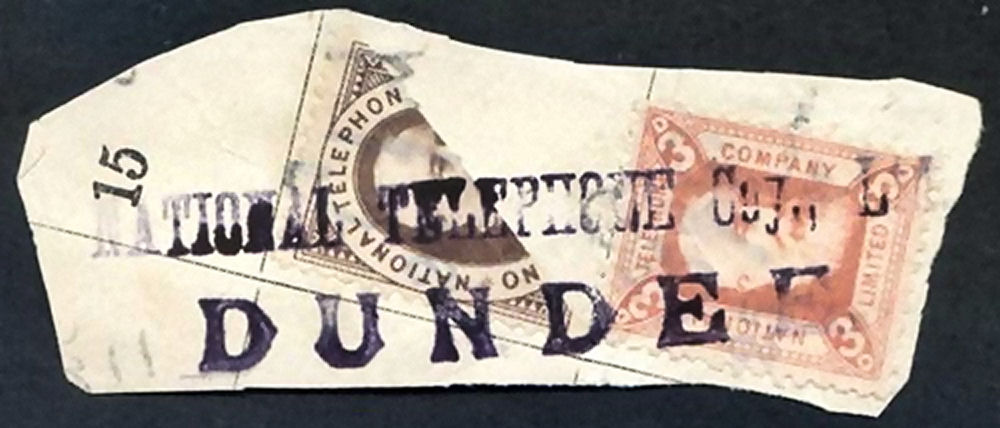
Another (better tied) example used in Dundee with a 3d to make 9d. Courtesy Mark Bloxham.
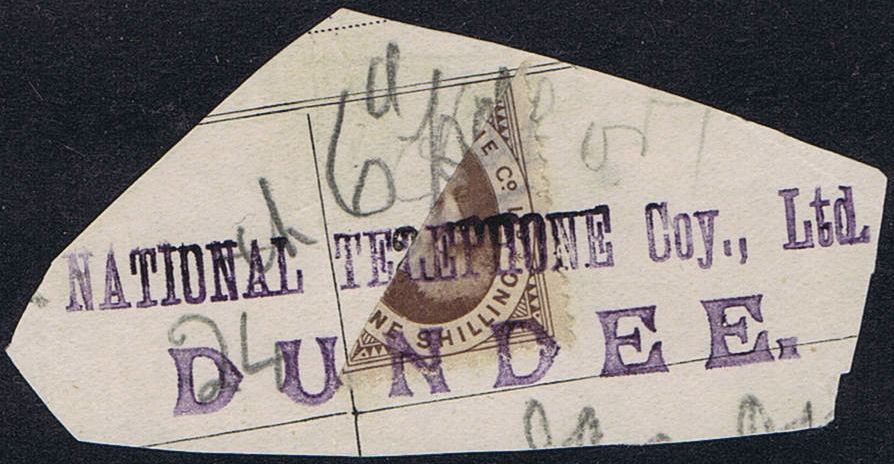
Another tied example used in Dundee.
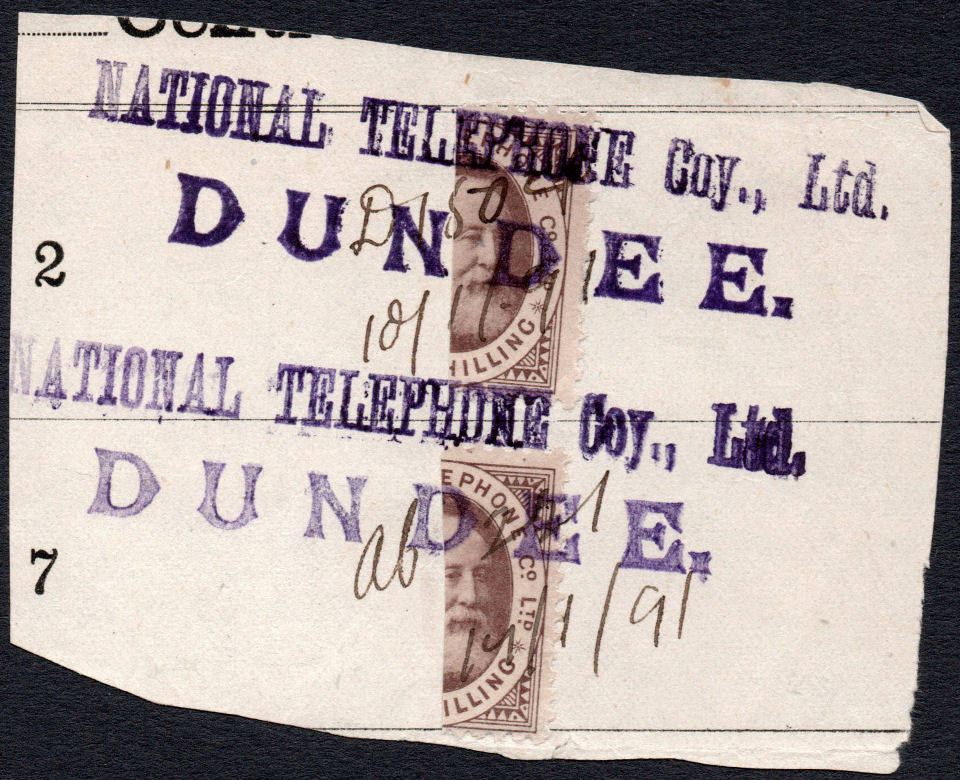
Two similar examples used in Dundee, these unusually bisected vertically. Dated January 1891 - courtesy of Steve Lawrie.
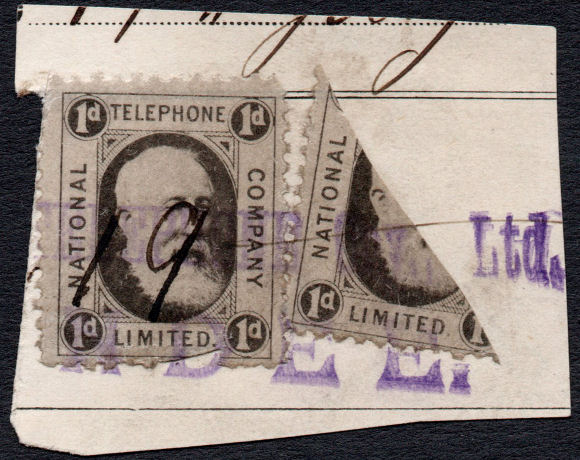
Last but definitely not least, a bisected 1d stamp RH1e used in Dundee, was that a mistake ? Courtesy of Steve Lawrie.
Apart from 'Dundee' above, other types of cancel include the following :
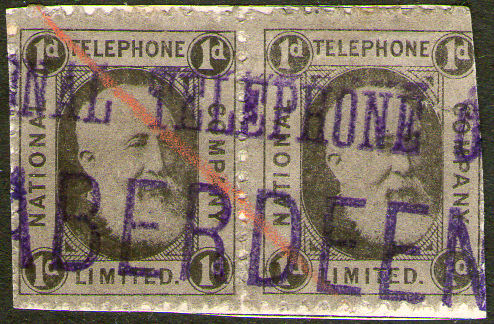 |
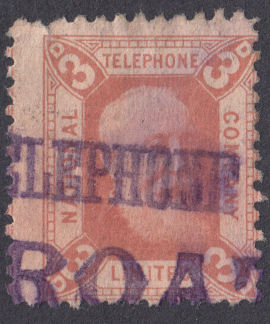 |
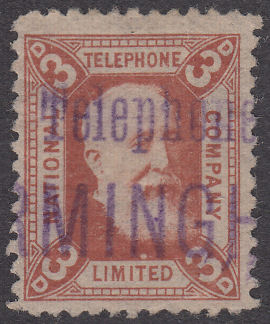 |
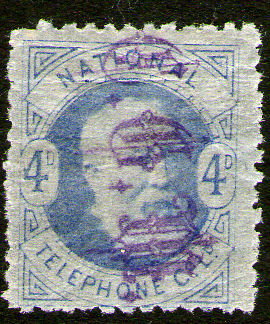 |
| 'Aberdeen' on 1d pair. | 'Arbroath' on 3d. | 'Birmingham' on 3d. | 'C.G.M.'? on 4d. See below. |
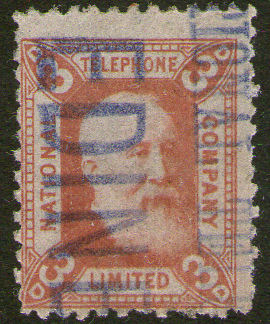 |
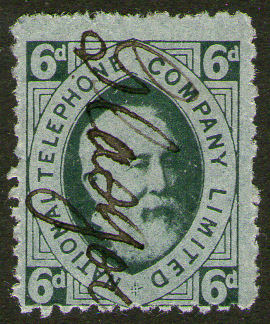 |
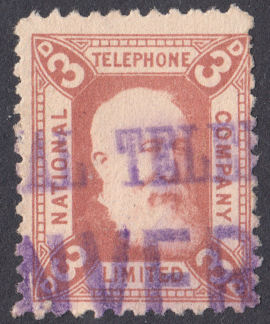 |
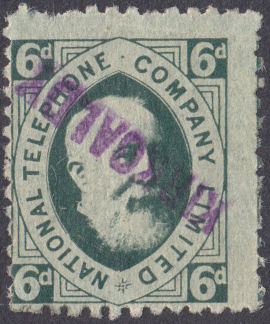 |
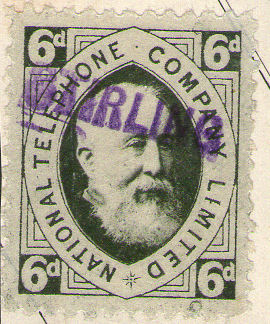 |
| 'Edinburgh' on 3d. | Munuscript 'Glasgow' on 6d | 'Inverness' on 3d. | 'Kirkcaldy' on 6d. | 'Stirling' on 6d |
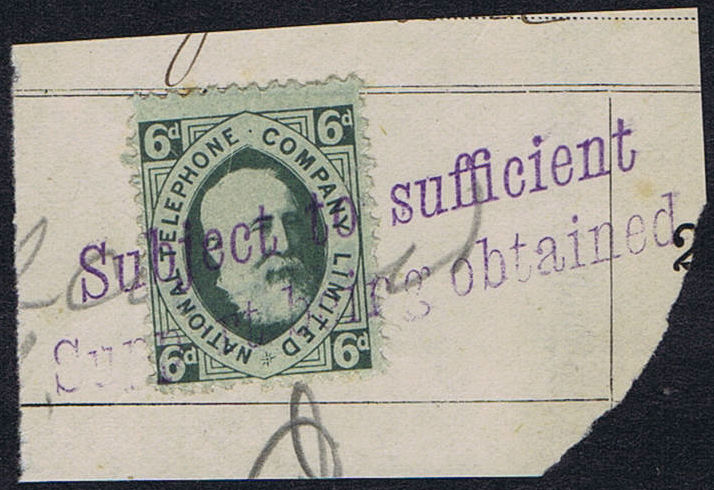 |
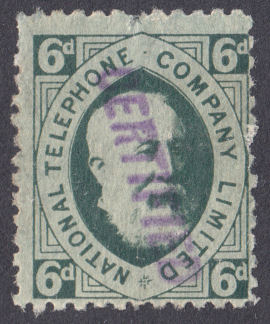 |
| A curious example cancelled with 'Subject to sufficient / Support being obtained'. | 'CERTIFIED' on 6d. |
Anyone know what C. G. M. stands for, if that's what it is ?
Here are some more examples courtesy of Steve Lawrie:
These are all additionally cancelled at Edinburgh. An auditor or inspector perhaps ?
These last ones appear to have been used postally !
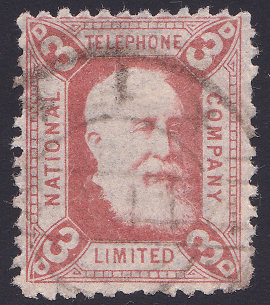
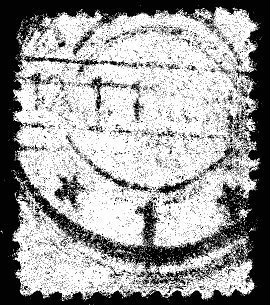 |
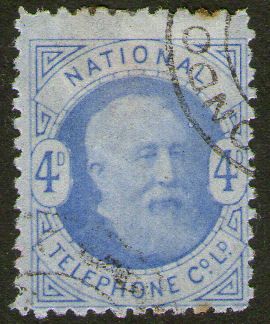 |
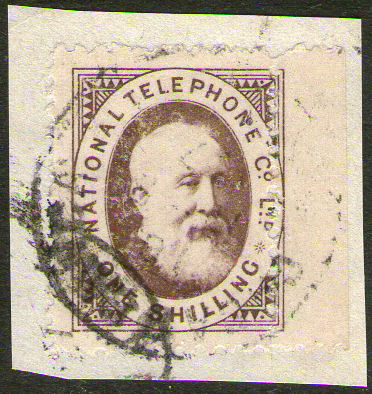 |
| Interesting cancel, presumably postal on a 3d | 'London' CDS on 4d ? | CDS on 1s ? |
According to Raymond Lister (1961),
"These stamps were withdrawn from use at the end of 1891 (Hiscocks says late 1891 ) to avoid the possibility of their being used by the public as postage stamps".
According to Hiscocks, the real reason was that improved coin-slot machines made them unnecessary. Raymond Lister gave the figures for initially issued quantities:
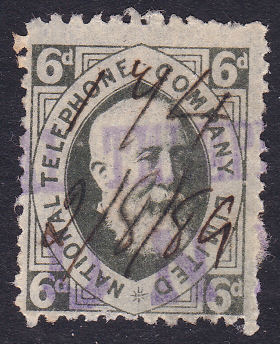
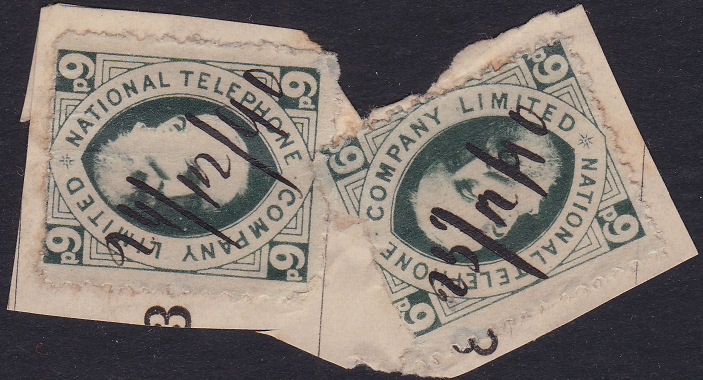
An Olive green example dated 2/8/89 and a Myrtle green example dated 24/12/90. It is possible that the Myrtle green stamps were a later printing due to a shortage.
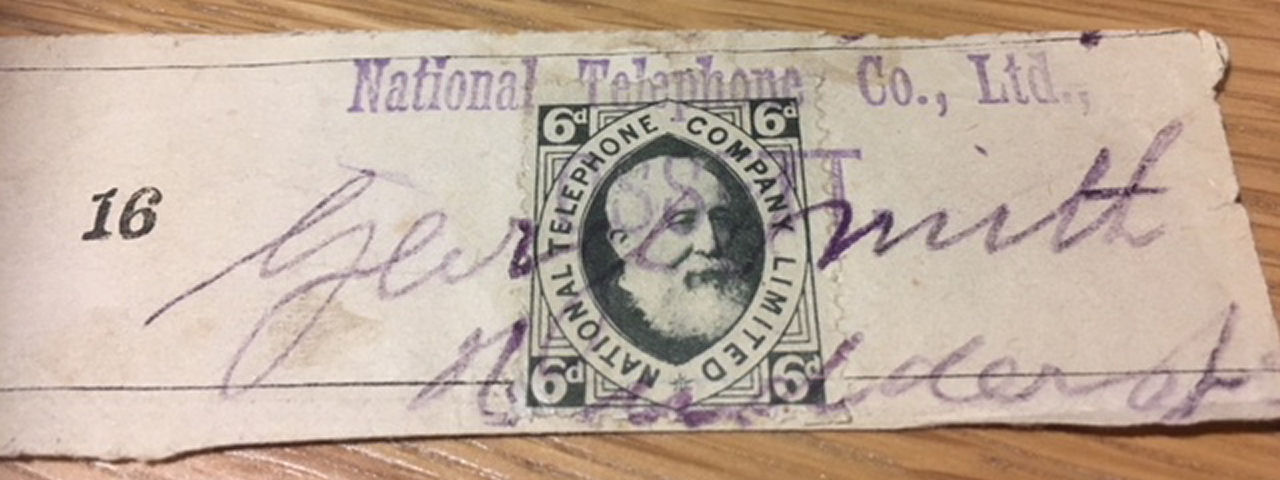
This scarce example from Osset shows the space allocated on the call sheet for each call. Each space was numbered, but clearly not always dated.
Image courtesy of Darron Welsh.
Does anyone have dated examples of Myrtle green earlier than 24/12/1890 ?
In addition, the 4d was issued later than the others to simplify payment for Trunk calls. I do not know the date of issue, but according to Steve Hiscocks:
"Although in theory all used stamps remained with the company large numbers of (threepenny!) packets of complete sets were sold at
international stamp exhibitions in Edinburgh in 1886 and 1890." I think the 1886 Exhibition was opened May 15 (by Prince Albert Victor)
If these were indeed complete sets, then that implies the 4d was available by 1886. Other than that I have no idea when the 4d was issued.
Does anyone have dated examples of the 4d stamp ?
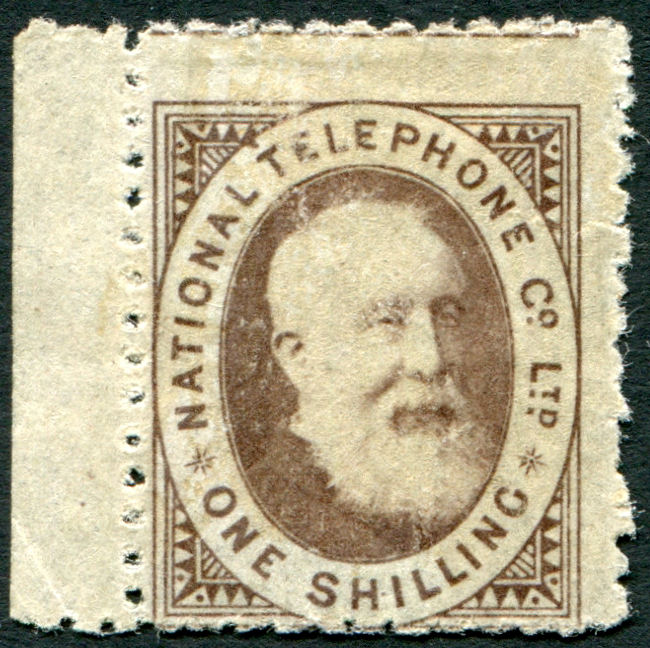
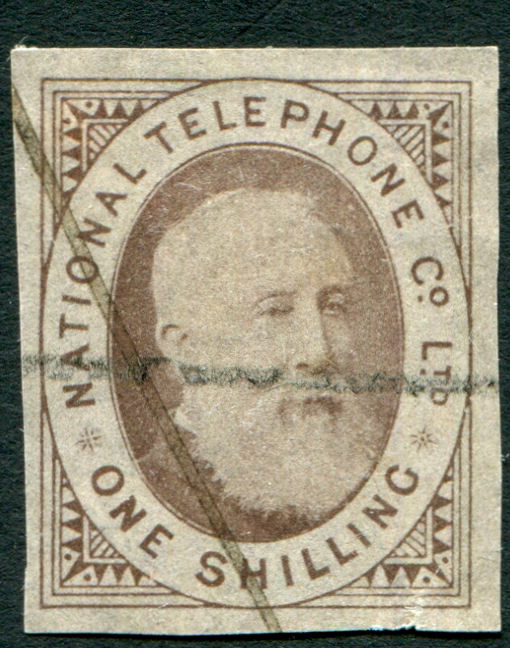
Here is an interesting pair of stamps, courtesy of Steve Lawrie.
The left stamp has a constant variety above the 'T' of 'TELEPHONE' together with a dot between 'SH' and 'ILLING'.
Another example can be seen on the sheetlet of 12 x 1/- below (4th stamp). It is not on all sheetlets though as multiple sheetlets were printed on a larger sheet
and subsequently guillotined. It is thought that there were 3 x 3 sheetlets per large sheets, which would make one 1/- stamp out of 98 with this variety.
The right stamp is perhaps more interesting. It is arguably just about large enough not to be a cut-down perforated example, with rather unusual cancels for these.
It also seems to be a better quality printing compared to the one on the left with which it was scanned.
The scan was included among other scans of stamps that were Ex. Raymond Lister, then later Ex. Steve Lawrie..
According the Langmead and Huggins the company provided services "only in Yorkshire, and a radius of twenty-five miles round
Middlesborough, Glasgow, Edinburgh, Dundee, Aberdeen and Nottingham, 20 miles round Leicester and in Belfast and the province of Ulster."
Used examples are known from Aberdeen, Arbroath, Dundee, Edinburgh, Glasgow, Inverness, Kirkcaldy, Leith and Stirling in Scotland
together with Birmingham, Leicester, Liverpool, Manchester and Ossett (near Leeds) in England.
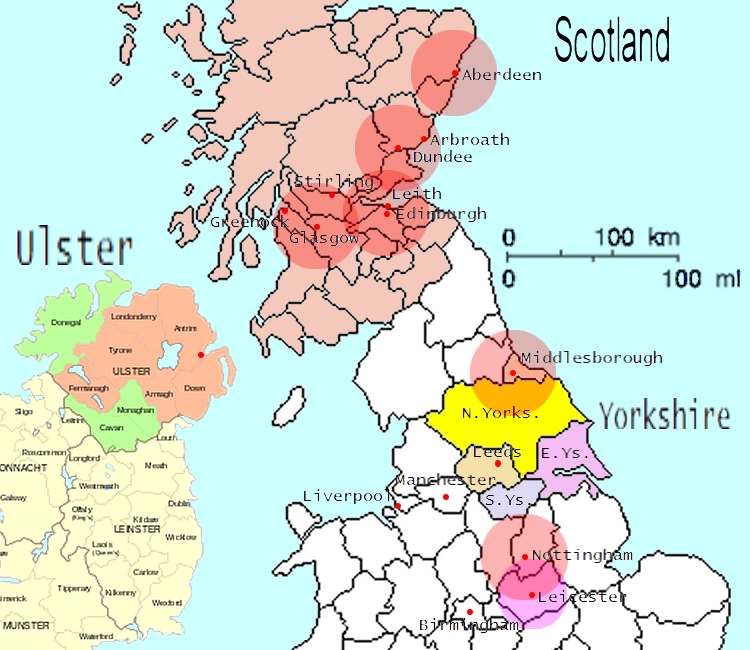
The province of Ulster includes Northern Ireland together with the counties of Cavan, Donegal and Monaghan from Southern Ireland.
In those days Middlesborough (now called Middlesbrough) was in North Yorkshire, but boundaries change.
It can be seen that some of the known used examples are from outside the areas the NTC were said to have operated within. This is due to the merger in 1889 with
the UTC (United Telephone Co.) and the the Lancashire and Cheshire Telephonic Exchange Company (L&C) which had much greater coverage to the south.
In fact retention of the name of NTC was due to its existing PO licence. The PO was unwilling to grant any more licences.
The Wikipedia write-up goes some way to explaining this, listing a series of mergers.
District Office addresses that I have seen on bills around 1900 are :
102, Portland Street, Manchester.
Telephone House, Rose Street, Edinburgh.
146-150, Wardour Street, London, W.
8, Scotland Road, Warrington.
Also a 1908 address of Telephone Buildings, Nelson Street, Bradford.
Discontinuation of stamp use.
Raymond Lister (1961) says these stamps were withdrawn from use at the end of 1891. Hiscocks says it was late 1891.
The item below with a Post Office embossed seal says 31 December 1890.
At least some of the bisected shilling stamps have dates around mid-January 1891. That is the latest that I have seen.
Can anyone provide an image of a stamp used later than that ?
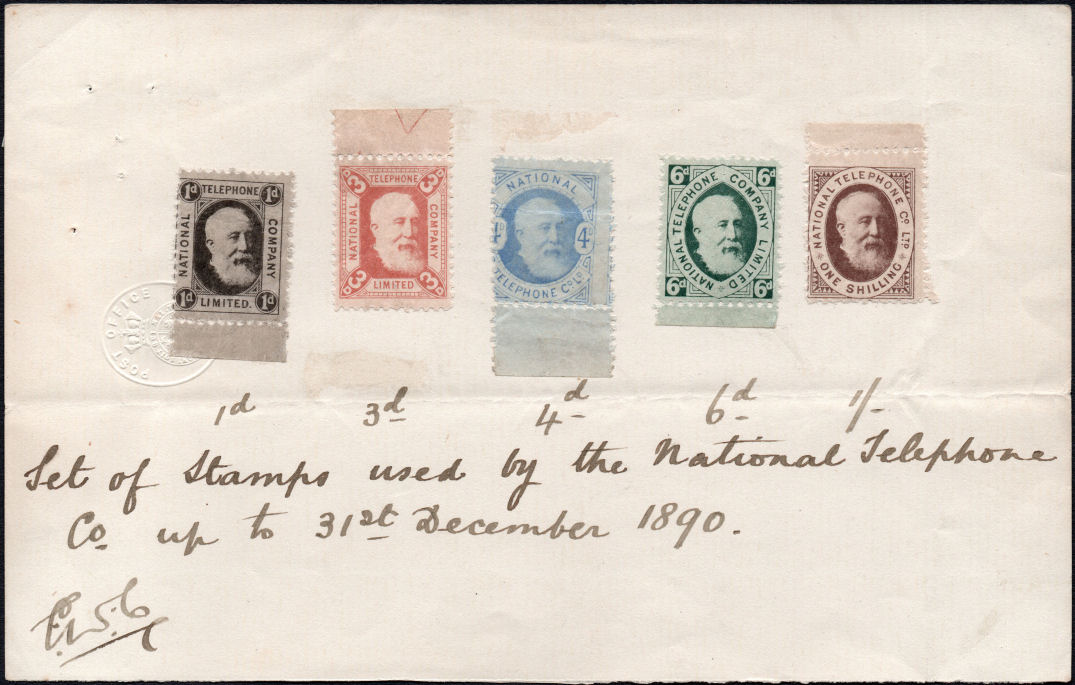
Post Office embossed item, courtesy of Steve Lawrie.
Complete sheets of 12 of the 1d and 1s are comparatively common, whilst sheets of the 6d are very rare.
| 3d, 4d and 1s. Courtesy of Mark Gibson. | ||
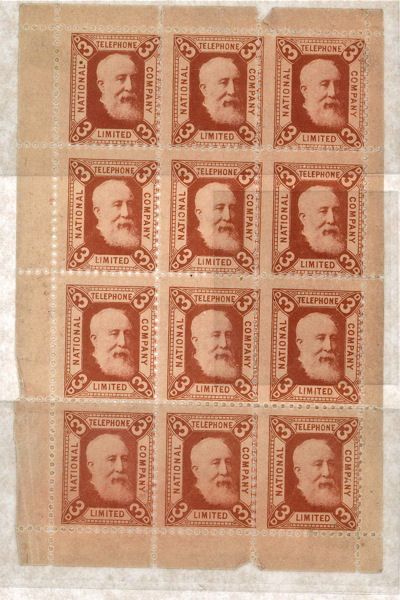 |
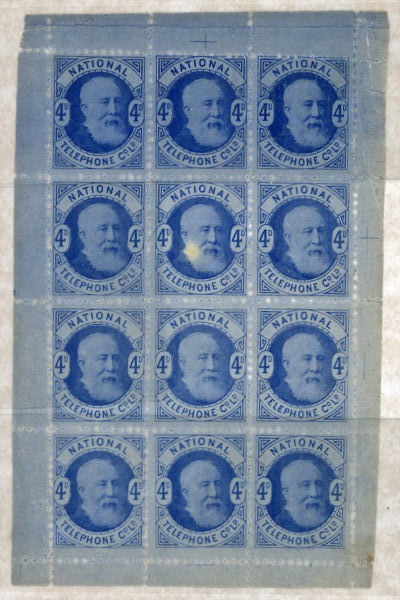 |
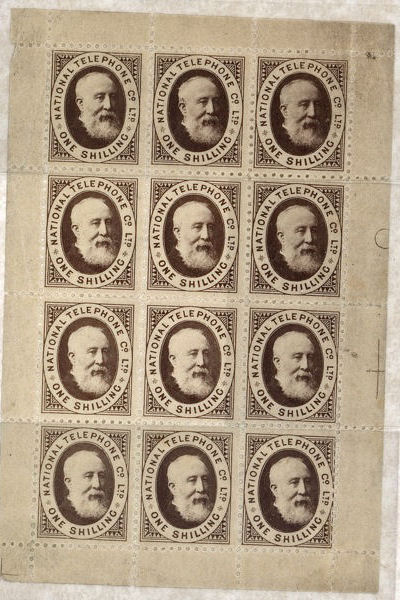 |
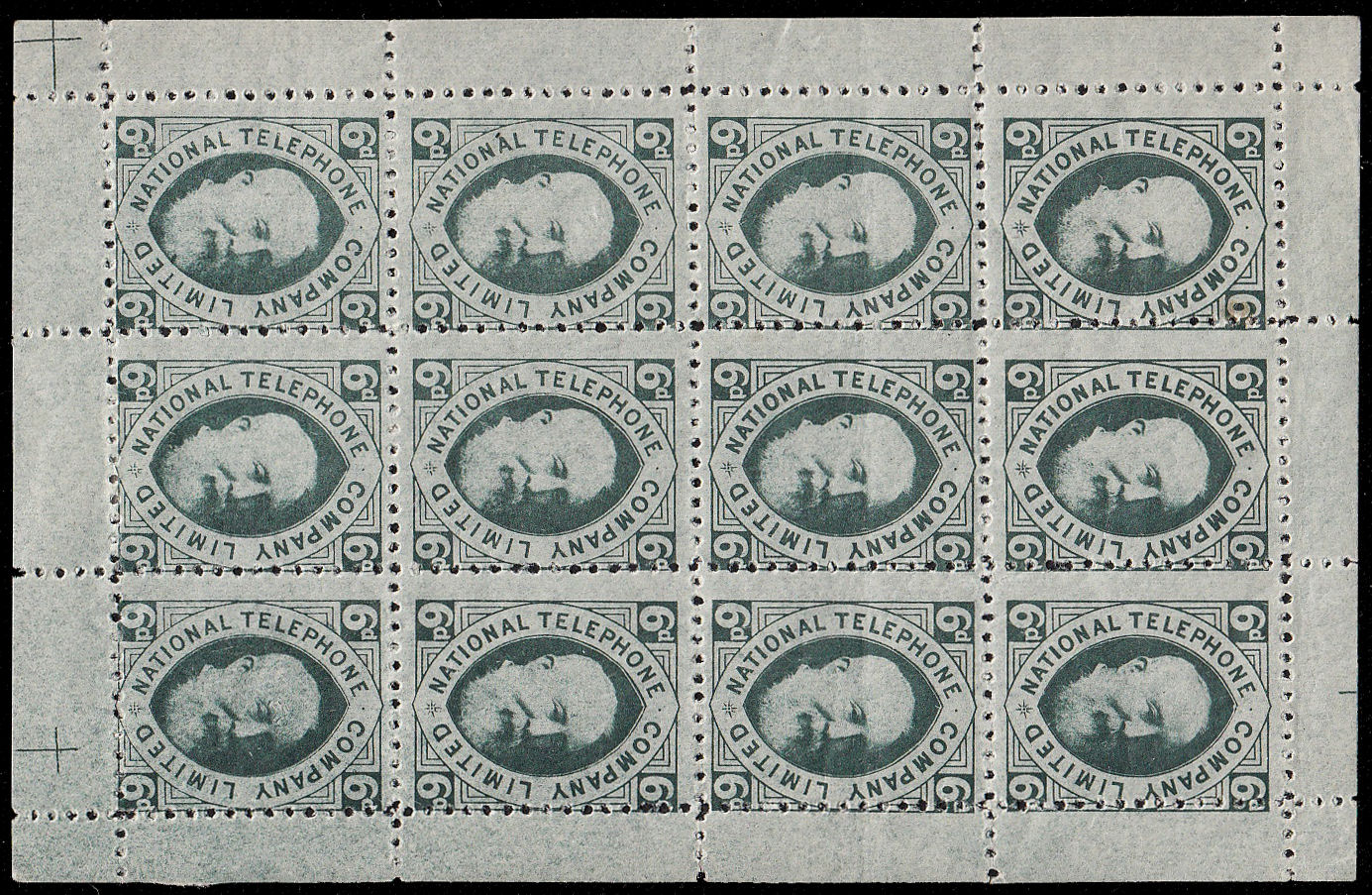 |
||
| 6d Myrtle green. Courtesy of Victoria Lajer of Andrew G Lajer. | ||
A complete 1889 Call Sheet for Leith, on the coast near Edinburgh, courtesy of Steve Lawrie.
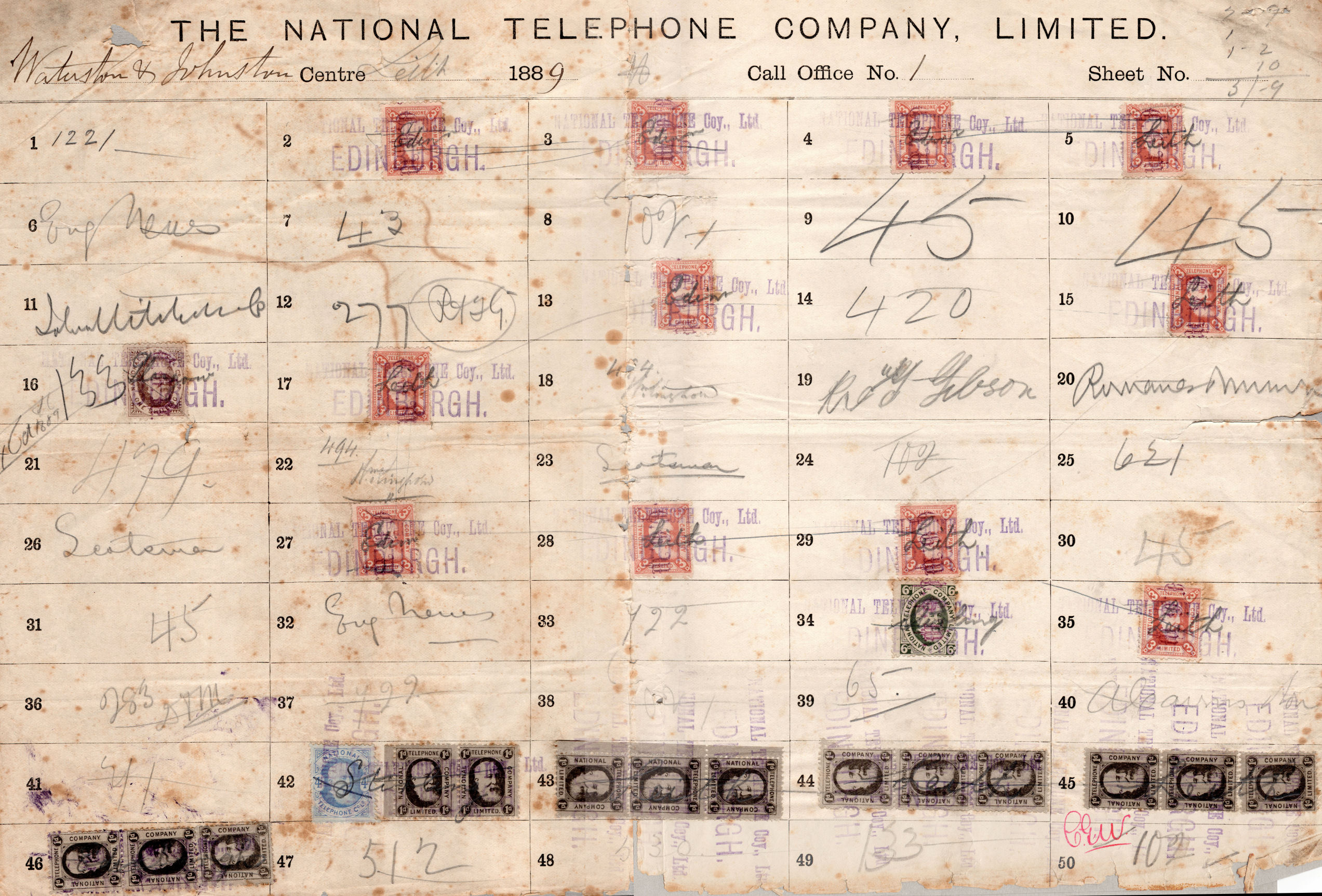
This full size, illustrated at half size image shows how the Call sheet looked. Subscribers simply signed their name,
others had to add a stamp. It is interesting to look at the proportions of the stamps, 1 x 1s; 1 x 6d; 1 x 4d; 11 x 3d and 14 x 1d, though towards the end most of the 1d stamps
were apparently used due to a lack of 3d stamps, and perhaps 6d stamps. Or then again, perhaps they just needed to use them up.
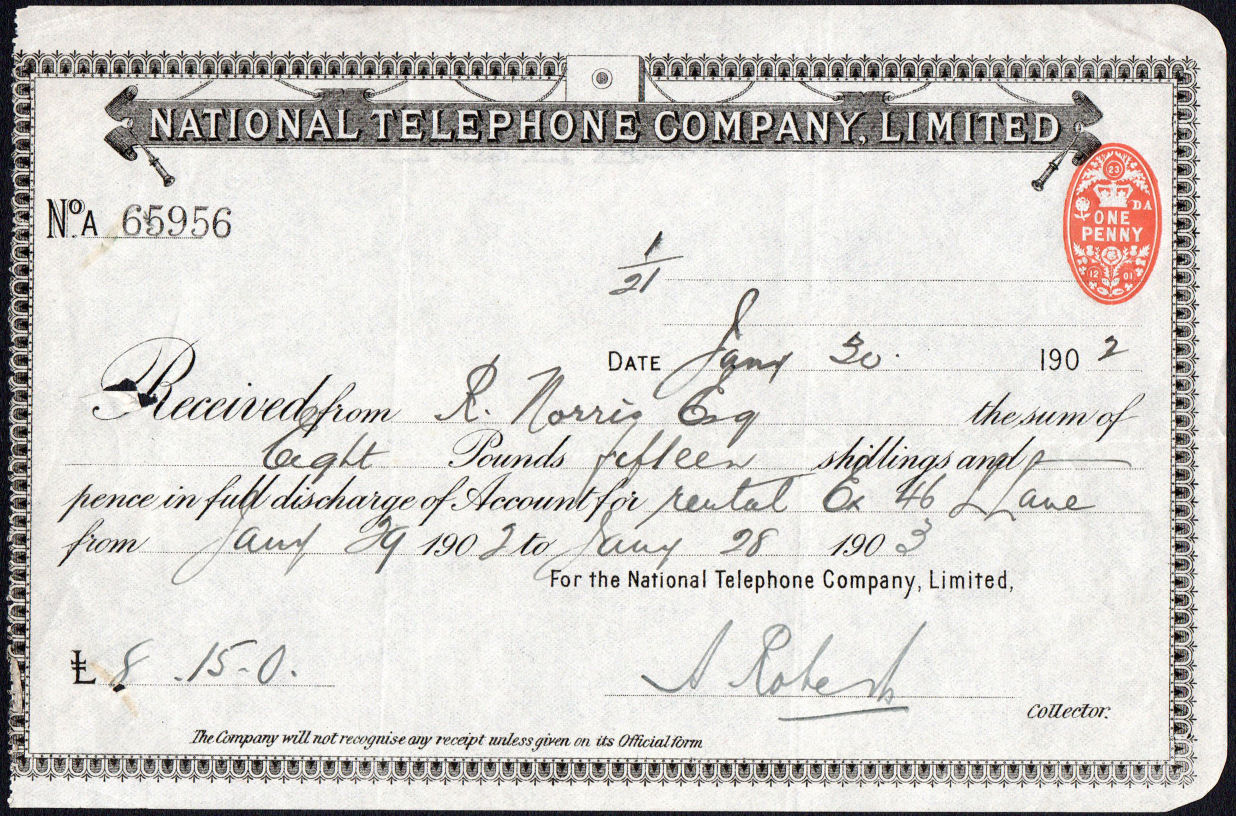
An annual 1902 subscription receipt for £8-15-0 paid in advance, courtesy of Steve Lawrie.
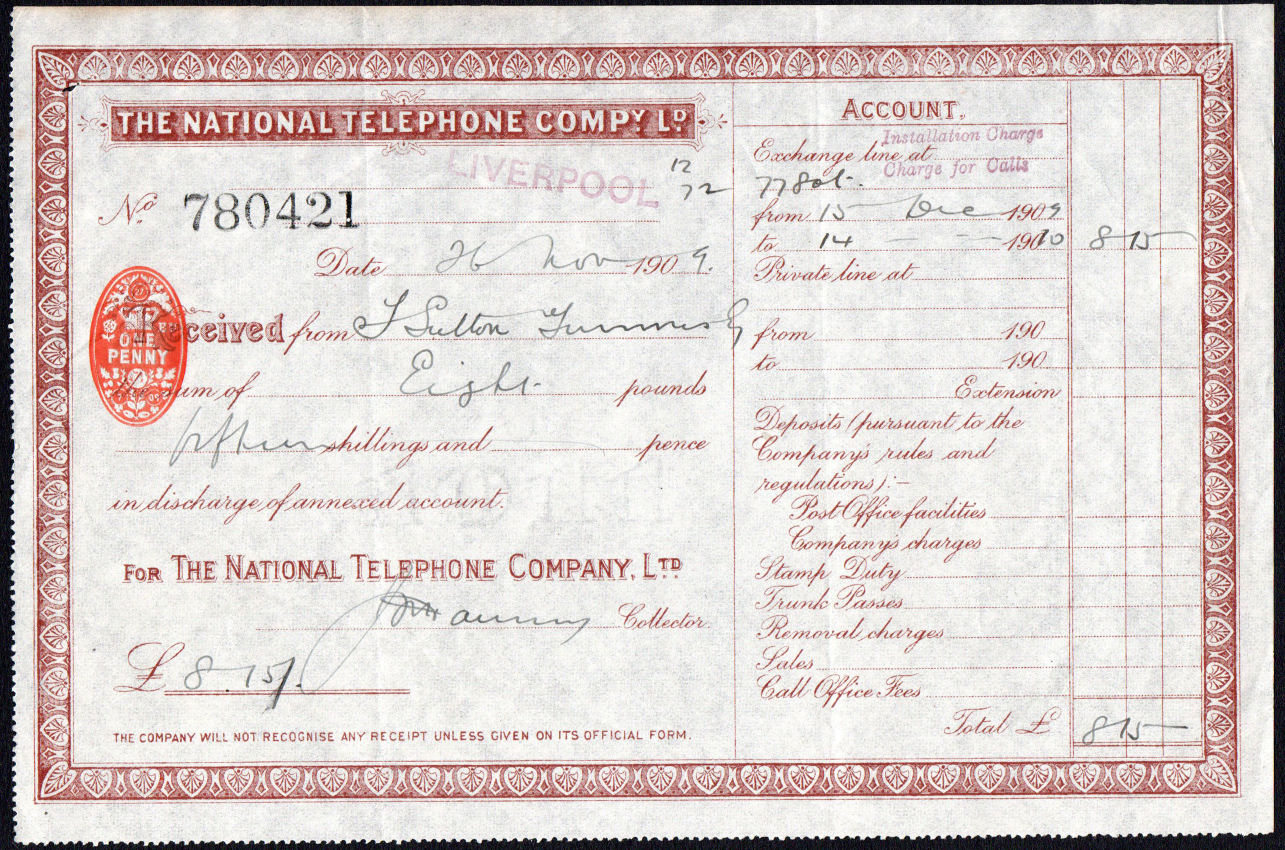
An annual 1909 subscription receipt for £8-15-0 paid in advance, courtesy of Steve Lawrie.
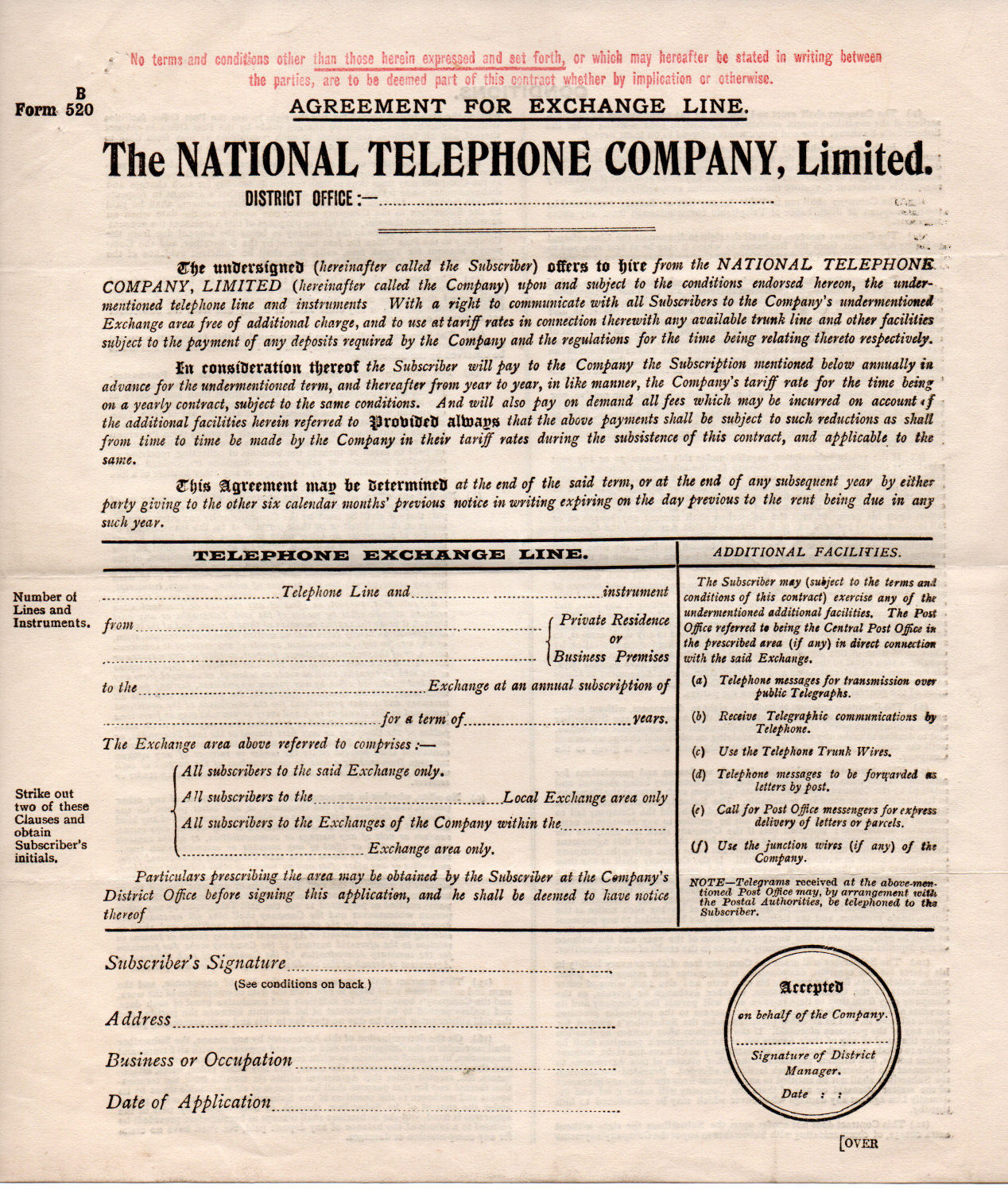
Form B520, the Agreement for Exchange Line, courtesy of Steve Lawrie.
"POST OFFICE FEES incurred for Trunk Calls, Postal Telegrams, and other facilities through...."
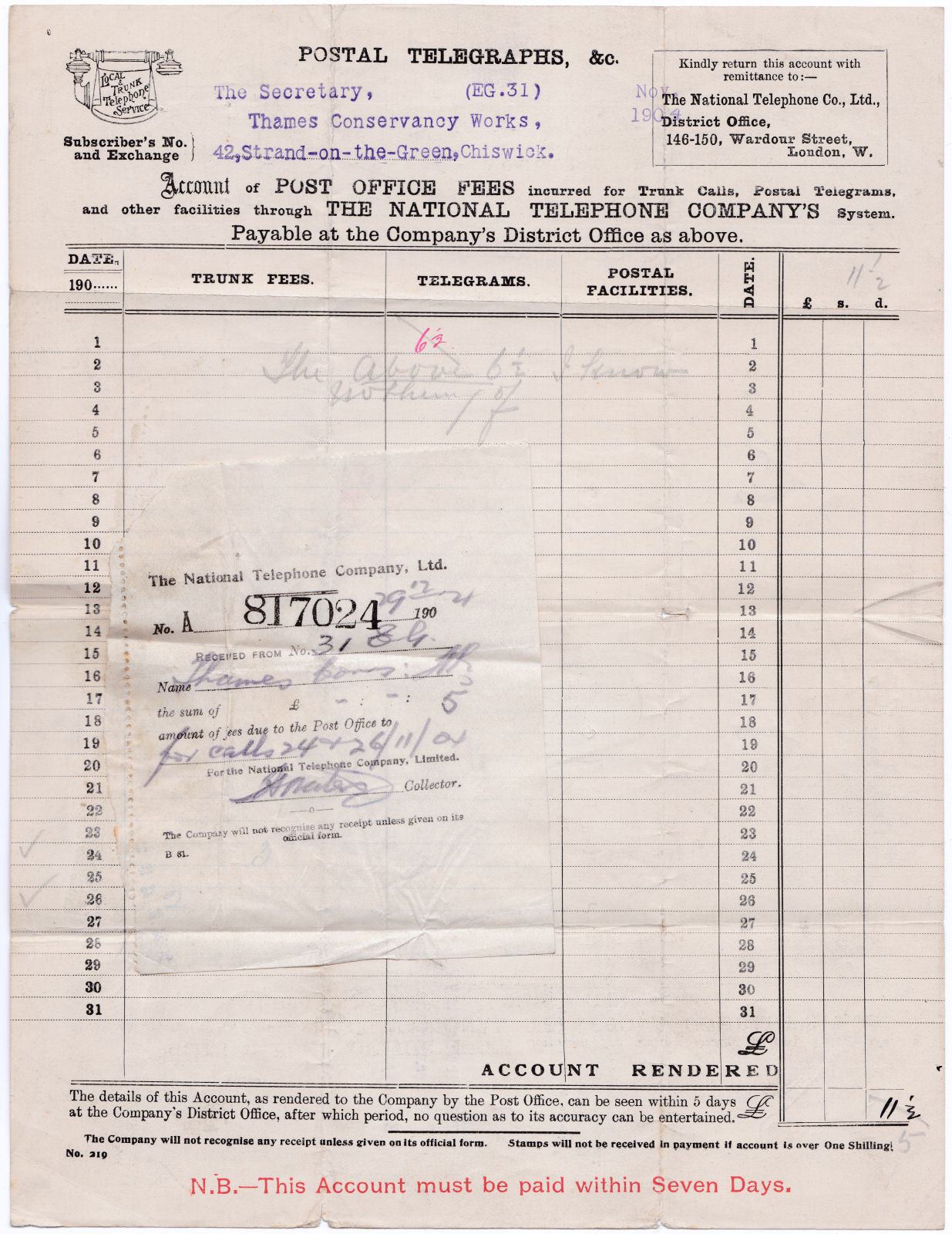
A National Telephone Co. Bill for November 1904 (150dpi). 6 ½d of the 11½d is disputed and only 5d paid, for which a receipt is glued to it.
The back of this, shown below, has the customer and return addresses, with an old ½d stamp over the new ½d for the return journey.
The form number "No. 219", can be seen at the bottom-left.
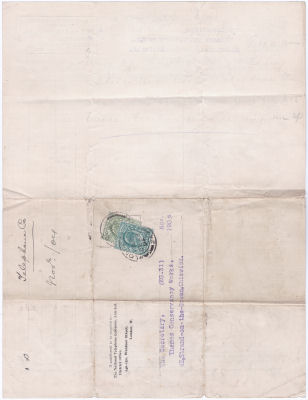
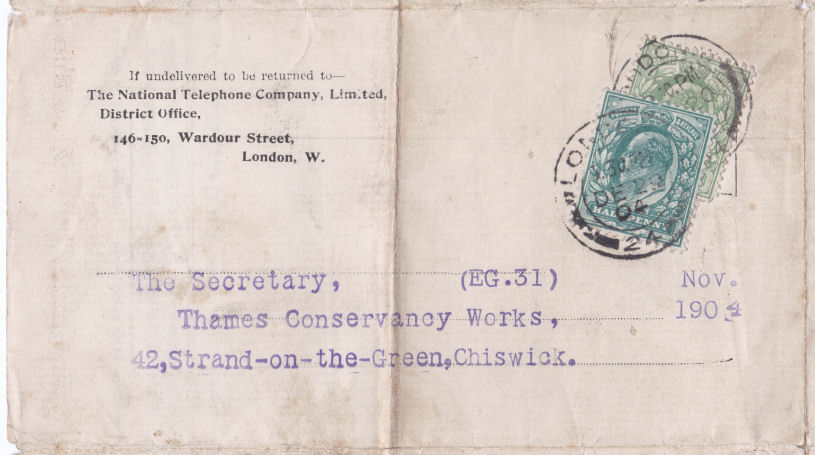
(Left at 37½dpi and right at 150dpi)
A similar form of 1907, used at Birkdale, Lancashire though missing the telephone image at top-left.
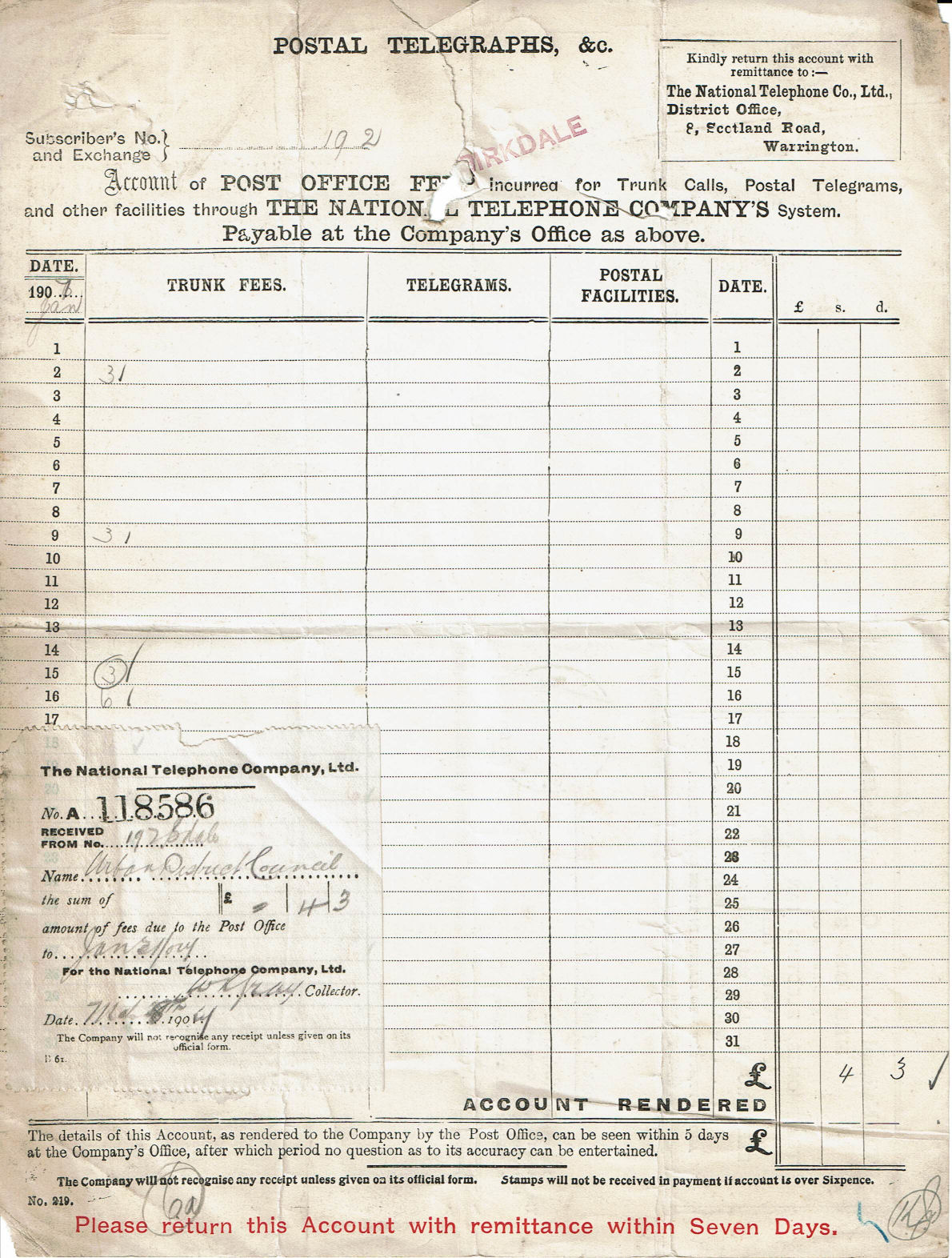
A National Telephone Co. Bill for November 1907 (150dpi) for 4/3d, for which a receipt is glued to it. The form number "No. 219.", can be seen at the bottom-left.
The back of this shows it has also been through the post twice, but adds an advertisement for other goods and services..
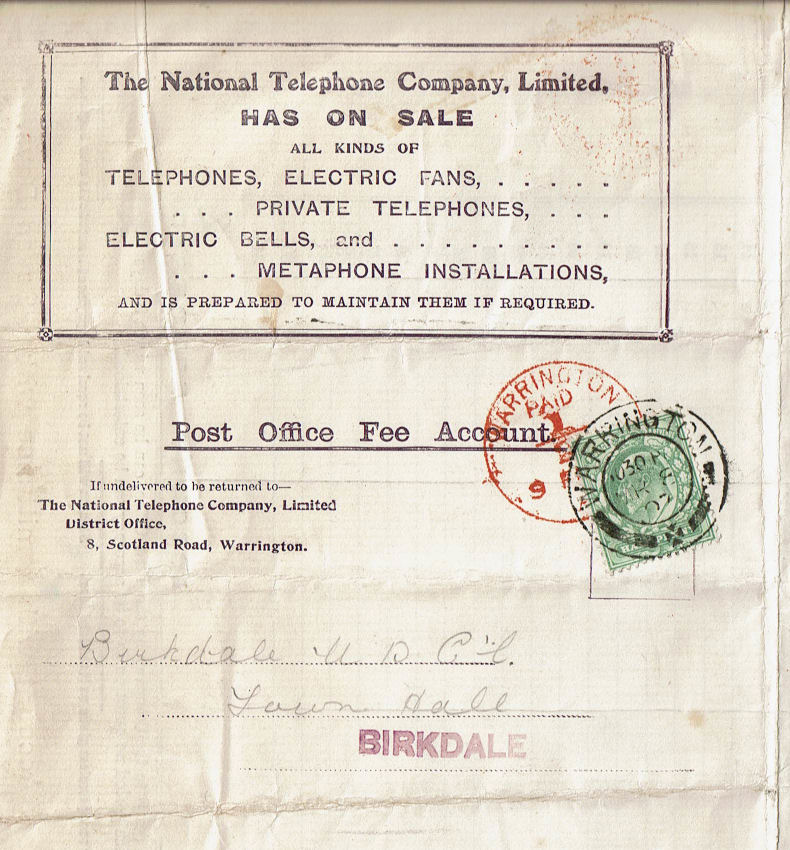
Images courtesy of Edward Coombes
I have seen a number of different forms, so will trtry to show the way they progressed. This is by no means complete.
Imprints and Headers to same scale (Note, first 3 are Manchester, followed by London then Birkdale, Lancashire :
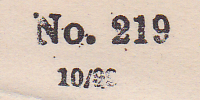 Assumed date: October 1899 Used date: October 1900 |
 |
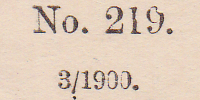 Assumed date: March 1900 Used date: April 1900 |
 |
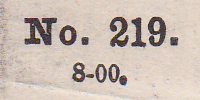 Assumed date: August 1900 Used date: November 1900 |
 |
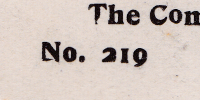 Assumed date: 1901 ? Used date: November 1904 |
 |
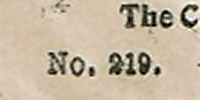 Assumed date: 1905 ? Used date: January 1907 |
 |
Acknowledgment.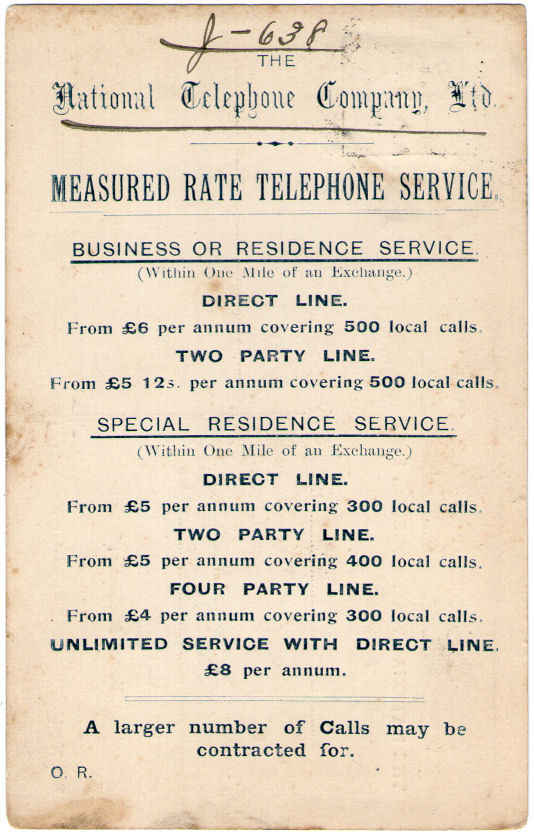
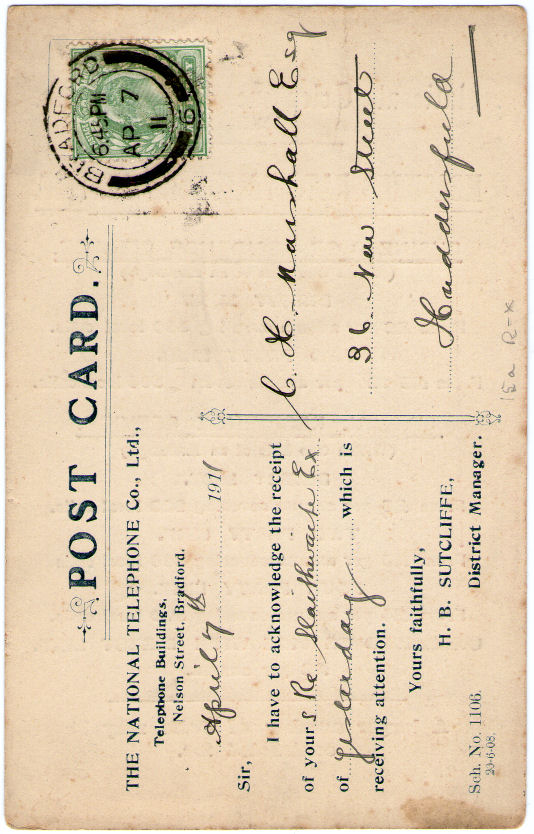
National Telephone Co. Acknowledgment Card of 7th. April 1911 showing 'Measured Rates' of available services.
On the left, the letters "O. R." can be seen bottom-left. On the right, an imprint of "Sch. No. 1106. / 20-6-08"
Last updated 2nd. December 2022
©Copyright Steve Panting 2012/13/14/15/16/17/18/19/20/21/22 except where stated.
Permission is hereby granted to copy material for which the copyright is owned by myself, on condition that any data is not altered and this website is given credit.